Vinification
Portfolio
Tips to Enjoy Madeira
- TOP
- Vinification/Portfolio/Tips to Enjoy Madeira


-

Estufagem
Heating method to heat the wine artificially inside stainless-steel tanks or vats. Wine heated by this method is destined for 3-year-old Madeira Wine. Vinhos Barbeito heats the wine with temperature between 47℃ and 50℃ for longer than 3 months. Heating with lower temperature for longer period of time allows wine to grow for smooth style. -

Canteiro
Aging method to heat wine naturally in casks left in attic room where the temperature is elevated by solar heat. This aging method is used for wine made from white grape varieties and vintage Madeira Wine. Vinhos Barbeito has a ‘canteiro’ warehouse where four corners of the ceiling are sunken, which creates spaces with different temperatures within the warehouse. Slow aging with periodical adjustments creates beautiful acid in wine.
Mutations caused by Aging

What makes Madeira Wine unique are ‘oxidative aging by heating’ and ‘concentration’.
It means wines are intentionally oxidised by heat. Vinification for Port and Sherry doesn’t take the heating process, and instead, they are aged at a cool temperature. Over the time, Madeira Wine is aged and water evaporates, resulting in concentrations of sugar, acid and alcohol. Further aging caramelises sugar in wine, and the liquid colour changes to amber or golden brown. At the early stage of aging, aroma is rather fresh, but as wine ages and matures, the simple aroma becomes a more complex bouquet with notes of dry fruits, spices, etc.
As Madeira Wine is already oxidised in the vinification process, there is a very limited chance for the wine quality to deteriorate even after the bottle is open. For that reason, there is an incredible number of old vintage wines, and more importantly, we can appreciate and enjoy such old-aged wines without worrying about quality loss.
How the Heating Process came to be
Episode 1
Back in the Age of Discovery, Madeira Island was situated right on the transatlantic route for the ships leaving Europe and heading to the Americas, India and Asia. For that reason, Madeira Island was an important provisioning point where sailors of many fleets loaded water and wine onboard and went back to their voyages. Onboard wines from Europe couldn’t resist the severe conditions on the ship travelling around the equator and the exposure to high temperature. However, for some unknown reasons, Madeira wines aged even under such conditions. This soon attracted attentions and received positive reputations in the New World (American continent), which then, as scarce high-end wine, was sought by European countries including the U.K.

Episode 2
Madeira Wine was prized amongst the upper class, and for the wine undergoing round trips on transatlantic and Indian routes many times (it was called ‘vinho da roda’, meaning ‘round-trip wine’), Madeira wine producers in the 18th century came up with process and methods to heat the wine so that wine can be aged inside the island as well. That was when and how two aging methods started: one called ‘canteiro’ where wines stored in attic warehouse is slowly heated by sun exposure, and the other method called ‘estufagem’ where wines in stainless steel or wooden vats undergoes artificial heating process.

Episode 3
In the late 18th century, trades between Europe and the New World were suspended due to the influences of wars and conflicts from the Great Siege of Gibraltar to the American War of Independence. Madeira Island, as a result, had a huge volume of wine accumulated, which have eaten up the storage space. In order to solve this problem, islanders came up with distillation for the purpose of reducing wines in stock, and started to create brandy distilling Madeira wines. Producers then discovered that the use of this brandy in vinification results in fantastic flavour and great preservation. Madeira Wine today is the fruit of introducing two elements: thermal maturation and fortification.

Popularity of Madeira Wine in the U.S.A.
George Washington, the first president of the United States of America, and Thomas Jefferson, the primary author of the Declaration of Independence, were both Madeira Wine enthusiasts. That is why, as their choice of celebratory drink, they are said to have clinked glasses of Madeira Wine to toast the Declaration of Independence in 1776.
Madeira Wine; the wine loved by founding fathers of the United States of America. Being praised and becoming the favourite drink of kings, emperors and politicians, the wine was more and more sought and enjoyed.
Vinhos Barbeito recently launched the new product series named ‘historic series’, on which bottles, labels have historical legends and American historical location names, and the sale of this series was a huge success receiving a great response in the American market. Therefore, all the wineries are now busy travelling to the U.S.A. for the promotion of wines, and the market there is again in full swing like they used to be.
Grape & Taste
Madeira Wine comes in different flavours, characters and/or ages, from 3 years old Tinta Negra to so-called old vintage with over 100 years made from white grape variety.
Tinta Negra is a red grape variety used for Madeira Wine. This grape variety is an all-rounder, meaning that the wine made from Tinta Nagra can be any of 4 styles, from dry to sweet. White grape varieties, on the other hand, have their own flavour profile which are different from each other. For example, the variety called Sercial makes dry Madeira Wine, Verdelho makes semi-dry wine, Boal/Bual makes semi-sweet wine and Malvasia/Malmsey makes sweet wine.
It could be a fun idea to get a wine flight with different grapes used, different aging periods, and/or from different producers to test your palate, or quite simply to see which one your favourite is.
Attractive Features of Tinta Negra
Tinta Negra (red grape variety) is disease-resistant and productive variety, and it’s often well-known as a variety subject to ‘estufagem’ (artificial heat-aging method) for making 3-year-old Madeira Wine.
However, this grape can also be matured by ‘canteiro’ (natural heating method) just like white grape varieties. Slowly aged Tinta Negra wine changes its colour to shiny amber, and reborn as refined Madeira Wine with natural soft acid and round sweetness in it.
For its productivity, excessive production becomes problematic as it frequently happens, but Blandy’s found a lucrative and effective solution even for that, and launched the new rosé wine ATLANTIS which is made from Tinta Negra.
For the fruity aroma with red berries and cherries, and amicable acidity reminiscent of the soil of Madeira Island, this rosé wine can be paired and enjoyed with any type of dishes of your choice, from appetiser to chicken or fish entrée.
Tinta Negra is the all-round player delivering any flavour profile for the finished wines, and the style of drier or sweeter taste is decided according to when to add alcohol (i.e. fortification timing). It can also produce the wine aged by the ‘canteiro’ method, or even the still wine, so this grape truly is a versatile and flexible variety.
Let’s Enjoy Madeira Wine!
Do you wish to try Madeira Wine, and yet tend to get cold feet because you think it’s too difficult and complicated for beginners?
Not to worry! We’re here to give you some useful tips to enjoy Madeira Wine, from storage to pairing food ideas!
Tips for Drinking
Madeira Wine can be served at room temperature and it’s perfectly fine, but slightly cooled/chilled would be recommended.
It can be digestif, aperitif, or even with some dishes or over a meal. It’s really up to you!
Tips to Enjoy Madeira Wine Even More!
-
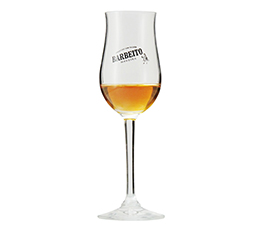
Neat
With room temperature, you can enjoy the deep and complex bouquet of the wine. With lower temperature after cooling down a bit, your taste bud would enjoy the refreshing and clear taste of the wine. The recommended temperature for dry and semi-dry types is 12℃, and 14℃ for sweet and semi-sweet.
-
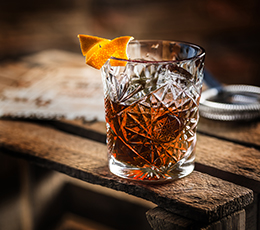
-
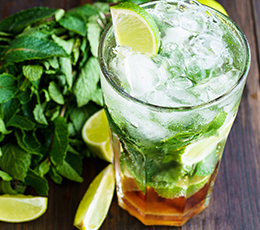
Madeira Rock ‘n’ Mint
Crush some fresh leaves of spearmint until it is aromatic, fill the glass with crushed ice and your choice of Madeira Wine, and squeeze a lime into it (finishing with soda, if you’d like, just like a mojito!). As surprising as it sounds, Madeira Wine and mint go well together. Perfect with Boal/Bual.
-
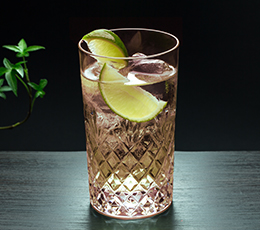
Madeira Splash
Cut lime into wedges and put one or two (to your preference) into the glass already filled with ice cubes, and pour Madeira Wine of your choice. Add some tonic water and then finish with soda. Squeezing lime is optional. Refreshing carbonic acid on a hot summer day is the choice selected by many people, and the only problem is not to know when to stop!
Preservation and Storage
When it comes to keeping wines, it could give you headaches because of management of temperature and/or humidity, bottles to be kept in a horizontal position…, but not with Madeira Wine!
You’ll find out here how to keep the bottles of Madeira Wines even more easily.
-

Vertical Position
For its high alcoholic content, contact with the wine for a long period of time would damage the cork. Make sure you keep your bottles in a vertical position.
-

Room Temperature
Madeira Wine was heated in the process of vinification, so the wines can be stored at room temperature. If you store your bottle(s) for a longer period of time, the best would be to keep it in a cool and dark place. Keeping a bottle in the fridge too long might cause the concentration of elements in wine, resulting in some sediments.
-

Long Preservation
Madeira Wine was also exposed to oxygen in the process of aging. Even after opening a new bottle, the wine won’t be oxidised more than it already is, meaning that the flavour of the wine remains without being damaged or mutated. This is true after days, weeks or even years. This effectively means that you don’t have to finish the bottle in a day, or rather, you can enjoy your Madeira Wine little by little, every day.
The Enemy of Wine is the Best Friend of Madeira Wine
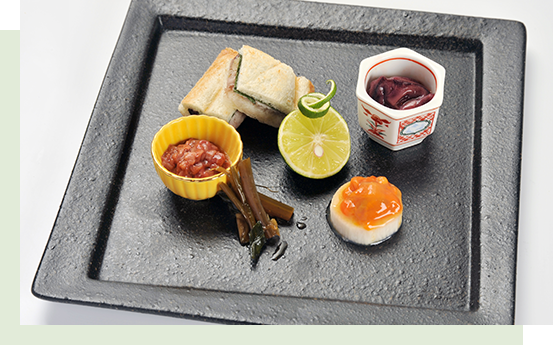
The biggest enemies for any still wines are ‘heat’ and ‘oxidisation’. Those wines can’t be stored in a hot place and the contact with oxygen causes the change of the taste.
However, exactly those two are the essential elements that play in Madeira Wine vinification.
Heating and oxidative aging do the magic for tasty Madeira Wine.
For example, have you tried fish roes with white wine? Fishy raw smell degrades the taste of wine, doesn’t it? That’s not the case for Madeira Wine! In fact, it’s mysteriously a good match.
It’s often said that wines won’t go well with slated fish guts, Natto (which is fermented soybeans enjoyed in Japan), garlic and/or vinegar, but they are good companions for Madeira Wine.





